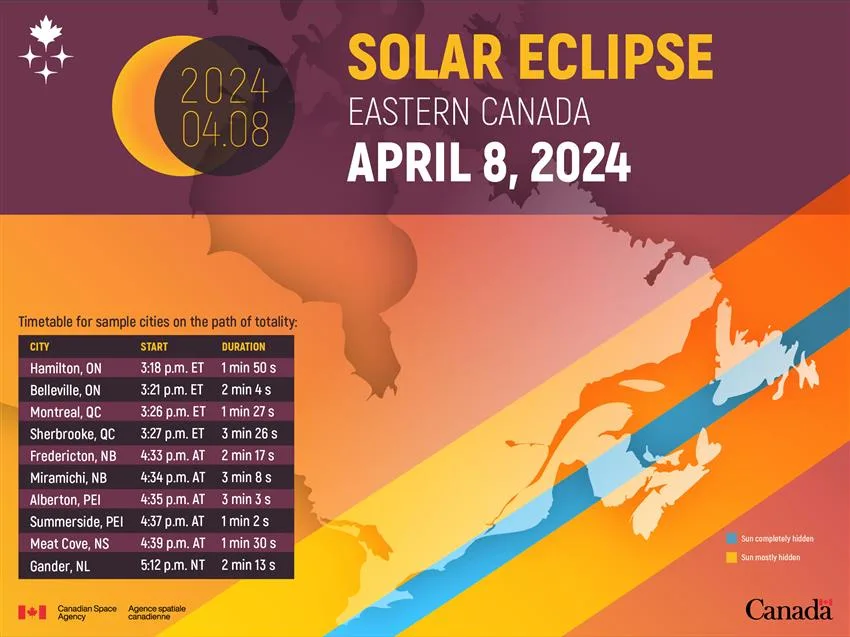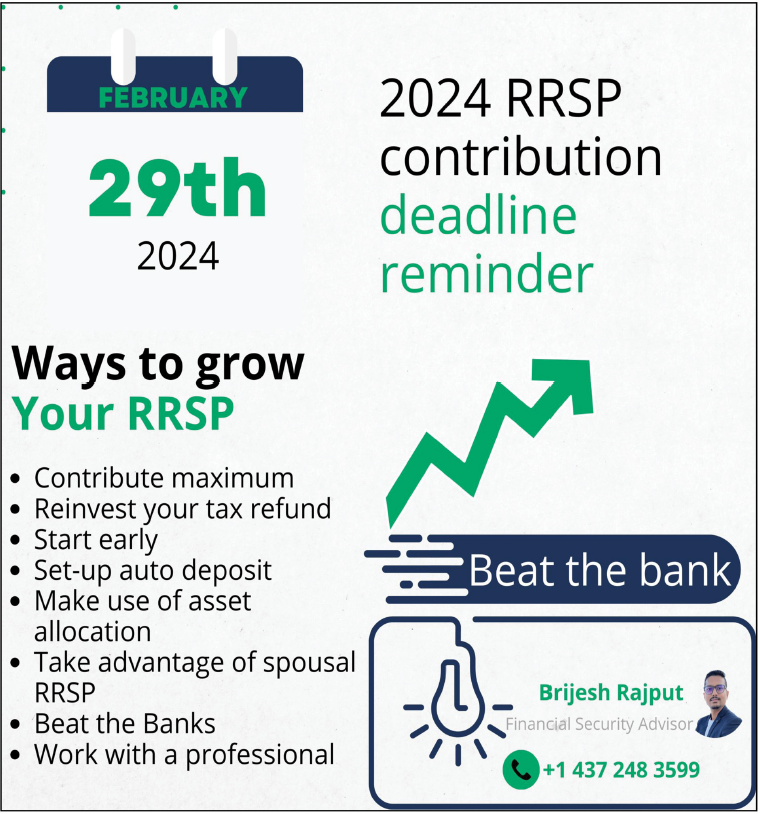As the highly anticipated total solar eclipse approaches on Monday, April 8, 2024, excitement is building across North America, here are some additional key details about the eclipse and its path across the continent. Dhwani has conducted thorough research and prepared special coverage for the upcoming total solar eclipse on April 8th. Our team has gathered the latest updates, expert insights, and safety tips to ensure you’re well-prepared to witness this rare phenomenon.
The eclipse will first make landfall along Mexico’s Pacific coast before crossing into Texas and continuing its journey through 14 other U.S. states. It will then exit over Canada, making this eclipse unique in its extensive path and duration. Lasting almost twice as long as the total solar eclipse that crossed the U.S. coast-to-coast in 2017, this event promises to captivate a wide audience.
While everyone on the continent will witness a partial eclipse, the most spectacular views will be reserved for those in the path of totality. Here, the moon will completely obscure the sun for up to an impressive 4 minutes and 28 seconds. This duration is longer than usual for such events and is expected to draw large crowds, including those in major cities like Dallas, Indianapolis, Cleveland, Hamilton, Niagara Falls, and Kingston.

An estimated 44 million people live within the path of totality, with an additional couple of hundred million residing within 320 kilometers of the path. This guarantees that this eclipse will be witnessed by the largest crowd ever for a celestial event on the continent.
As the countdown to Monday’s eclipse continues, anticipation is mounting for the unforgettable display of nature’s grandeur. Whether you’re in the path of totality or watching from a distance, be sure to prepare for this once-in-a-lifetime event. Stay tuned for more coverage and updates as the total solar eclipse on April 8, 2024, approaches.
Exploring the Total Solar Eclipse: A Celestial Phenomenon
For those curious about the upcoming total solar eclipse on April 8, 2024, understanding the mechanics behind this awe-inspiring event can enhance the viewing experience. A total solar eclipse occurs when the moon aligns perfectly between the Earth and the sun, obscuring the sunlight and casting a shadow on the Earth.
What sets this eclipse apart is its duration, which will be longer than usual due to the moon’s close proximity to Earth. At just 360,000 kilometers away, this is one of the moon’s closest approaches to our planet this year. The closer the moon is to Earth, the larger it appears in the sky from our perspective, resulting in a more profound and prolonged period of darkness as it blocks the sun’s rays.
In this video, Canadian Space Agency astronaut David Saint-Jacques explains this remarkable celestial event and reminds you to use eye protection as you witness the solar eclipse! (Credit: Canadian Space Agency, NASA)
During the upcoming eclipse, totality will last the longest over Mexico, where observers can experience 4 minutes and 28 seconds of complete darkness. In contrast, locations along the eclipse’s path, such as Syracuse, New York, will only witness totality for about 1 and a half minutes.
This celestial event offers a unique opportunity to witness the beauty and power of our solar system in action. Whether you plan to observe the eclipse from a hotspot or via live stream, be sure to mark your calendar for this extraordinary display of nature’s grandeur on April 8, 2024.

Total Solar Eclipse Path Across Canada
The upcoming total solar eclipse on April 8, 2024, will trace a diagonal path from southwest to northeast across North America, offering communities along the track a brief but captivating experience of darkness in the middle of the day. Totality will begin at Mazatlan, Mexico, and exit at Newfoundland, Canada, passing through 15 U.S. states from Texas to Maine.
The total solar eclipse on April 8, 2024, will pass over parts of Canada, offering a breathtaking celestial display to those in its path. Here are some key details about the eclipse’s path through Canada:
- Entry Point: The eclipse will first be visible in Canada near the town of Thamesville in southwestern Ontario, at approximately 3:16 p.m. EDT.
- Path Across Canada: The path of totality will cut a diagonal line across southern Ontario, passing through or near cities and towns such as London, Hamilton, Niagara Falls, Toronto, Kingston and Ottawa. It will then continue across parts of Quebec.
- Duration of Totality: The duration of totality will vary along the path, with the longest duration expected to be around 3 minutes and 38 seconds near the town of Lindsay, northeast of Toronto.
- Exit Point: The eclipse will exit Canada near the town of Saint-Louis-du-Ha! Ha! in Quebec, at approximately 3:49 p.m. EDT.
Click the link below to view the path of the total solar eclipse, including estimated timing for different zones.
Other major cities in Canada, such as Montreal, Quebec City, and Halifax, will experience a partial solar eclipse. It’s important to use proper eye protection when viewing the eclipse to prevent eye damage.
As the eclipse makes its journey across the continent, it promises to awe and inspire viewers with the wonders of the cosmos. Mark your calendars and prepare to witness this extraordinary event on April 8, 2024.
Environment Canada Weather Update for Total Solar Eclipse Viewing on April 8th
As the total solar eclipse on April 8th draws near, Environment Canada has provided a weather update for various regions in Ontario, including Niagara, Hamilton, the Greater Toronto Area (GTA), Ottawa, Kingston, and the Guelph and surrounding areas.
- Niagara and Hamilton: Niagara and Hamilton are expected to have partly cloudy skies on eclipse day, with periods of clear visibility. There is a chance of light precipitation in the morning, but conditions are expected to improve by the time of the eclipse, allowing for a good viewing experience.
- GTA (Greater Toronto Area): The GTA is forecasted to have partly cloudy skies on April 8th, with the possibility of some breaks in the clouds during the eclipse. While there may be some cloud cover, overall visibility should be fair, providing an opportunity to witness the eclipse.
- Ottawa: Ottawa is expected to have mainly clear skies on eclipse day, offering excellent viewing conditions for the celestial event. Residents in the Ottawa area can look forward to a clear view of the total solar eclipse.
- Kingston: Kingston is forecasted to have partly cloudy skies on April 8th, with the potential for some breaks in the clouds during the eclipse. While there may be some cloud cover, there should be periods of clear visibility, allowing for a good view of the eclipse.
- Guelph and Surrounding Areas: Guelph and the surrounding areas are expected to have partly cloudy skies on eclipse day, with the possibility of some breaks in the clouds. While there may be some cloud cover, overall visibility should be fair, providing an opportunity to witness the eclipse.
Environment Canada advises residents in these regions to stay updated on the latest weather forecasts leading up to the eclipse and to plan their viewing locations accordingly. With proper planning, residents in these areas can enjoy a memorable viewing experience of the total solar eclipse on April 8th.

Mark Your Calendars: Future Total Solar Eclipses
While anticipation builds for Monday’s total solar eclipse, it’s worth noting when the next ones will occur for those eager to experience this celestial phenomenon.
After 2024, the next total solar eclipse will take place in 2026, although it will be visible only in parts of Greenland, Iceland, and Spain. The following year, in 2027, a total solar eclipse will march across Spain and northern Africa, boasting an impressive totality lasting 6 1/2 minutes.
North Americans will have to wait until 2033 for another total solar eclipse, but this one will be limited to Alaska. In 2044, Western Canada, Montana, and North Dakota will have front-row seats to the eclipse. Finally, in 2045, the U.S. will once again experience a coast-to-coast total solar eclipse, offering another opportunity for a breathtaking celestial display.
While these events may seem far off, they serve as a reminder of the wondrous and cyclical nature of our universe.
Safety Tips for Viewing the April 8th Solar Eclipse
As the total solar eclipse on April 8th approaches, it’s important to remember that observing the sun directly can be harmful to your eyes. To safely view this spectacular event, consider the following safety tips:
Video : Learn about safe practices for observing a solar eclipse. (Credits: CSA, NASA)
- Use Solar Viewing Glasses: Purchase a pair of eclipse glasses that meet the ISO 12312-2 international safety standard. Regular sunglasses are not safe for viewing the sun.
- Use Solar Filters: If you have a telescope, binoculars, or camera, make sure to use a solar filter specifically designed for these devices. Never look through these devices at the sun without a proper filter.
- Create a Pinhole Projector: You can make a simple pinhole projector using cardboard to project an image of the eclipse onto a surface. Instructions can be found online.
- Use Welder’s Glass: If you have access to a welder’s glass with a rating of at least Shade 12, you can safely view the eclipse through it.
- Avoid Looking Directly at the Sun: Even with sunglasses or other filters, avoid looking directly at the sun during the eclipse. Take frequent breaks and give your eyes rest.
- Watch for Signs of Eye Damage: If you experience any discomfort or vision problems after viewing the eclipse, consult an eye care professional immediately.
- Follow Public Health Guidelines: If you plan to gather with others to view the eclipse, follow public health guidelines in your area to prevent the spread of COVID-19.
By following these safety tips, you can enjoy the total solar eclipse on April 8th safely and protect your eyes from harm.







One thought on “Special Report: All You Need to Know About the Total Solar Eclipse on April 8, 2024”
Comments are closed.